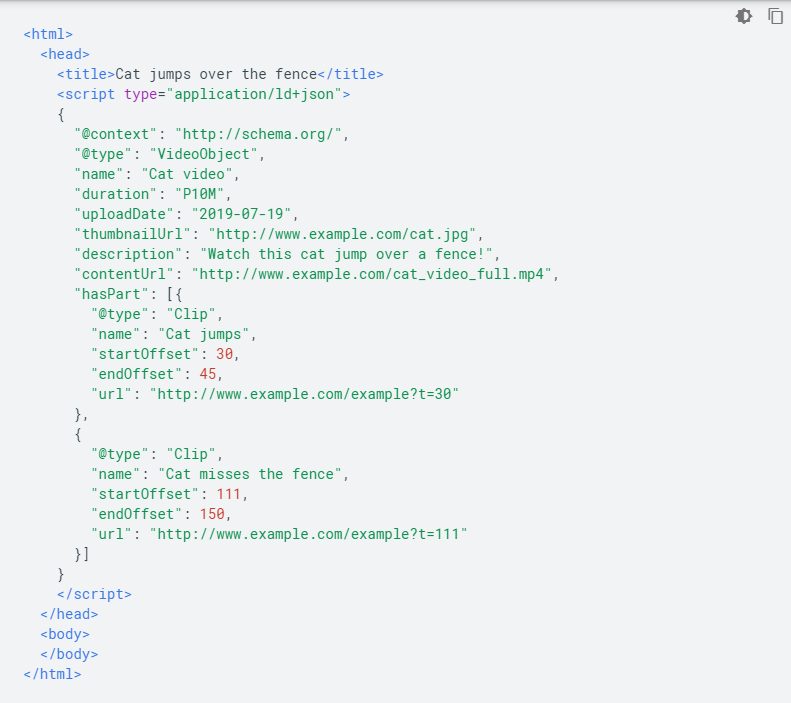Markup Videos with Schema: How Can It Improve Your Video Search Ranking?
Amid the million thumbnails and trending results, there is a way to beat around the YouTube algorithm and make your video be ‘seen.’ Let’s take a closer look at the schema markup.
Make no mistake about it, but the world believes, and people love believing what they can see! Of course, there are tons of writers making their way through the think tank, but the real question remains, how effective is that?
Obviously, we are talking about visualization and no wonder; it has revolutionized the digital world. Ever since videos started replacing the longer written forms of media, search engines absorbed and welcomed the change. In fact, Google was the first of all, to actually recognize the power of videos in digital marketing and SEO.
Then came the race to win, and soon enough, YouTube had to tackle millions of videos every hour, qualitatively and quantitatively.
Just like the usual SEO techniques, videos started getting the attention, and finally, we are here, talking about ways to rank it up.
Yet you see, in order to make them the content’s best buddy, we need to make them seen and popular in the search engine. That’s where structured data and schema comes into action.
What Is A Schema Markup?
Yeah, it is a bouncer for the mind, and it would be easier if we tell you what structured data is first.
At the end of the day, search engines aren’t human. There are AI-powered databases, and we need to use codes to help them understand your online content. That’s exactly what structured data is in layman’s language.
In order to do that, you need a dictionary to arrange and communicate with the search engine properly. That’s what schema is. They are a well-maintained list of codes that would be used in your structured data for a better understanding of your target search engine.
Why Do You Even Need A Schema?
Since search engines aren’t human, they need to have a means of interpreting your content. They tend to use small bots or spiders to roll around the entire website and skim information.
Since they aren’t human, there’s no way they can understand videos and images until you specify in ‘their’ language that ‘it’ is a media!
Fair enough?
Schema markups help the search engine bots to understand the information in the form of videos and images and store them for contextual information.
The Basic of Embedding a Video with Schema
Search engines are all about giving the people what they are looking for. So when the search engine fairly understands that your content is a video or an image, you also need to specify how and where people would find it useful.
Based on your information, the schema markup will be embedded, and it will appear in the SERP. Here are a few things which you must never miss out.
- Name
- Description
- Duration
- Transcript
- Upload Date
- ThumbnailURL
- ContentURL
- EnbedURL
- Expires
The primary use of these parameters is to help the search engine understand why your video is relevant to the search query and how contextual it is to the query. Get the complete definition of video Object here: https://developers.google.com/search/docs/data-types/video#video-object
Let’s Begin The Video Optimization With Schema Markup
Every website and page has an HTML code (there is, of course, JS and CSS but speaking of Google, bots tend to find HTML snippets easier to crawl and thus, the natural choice)
All you need to do is add the schema markup to the HTML code of your video page. It is an invitation for the bots to go through the markup and find your video content to be relevant to the search query of your choice, apart from indexing the video and showing it in the SERP whenever the query pops up.
A basic schema markup HTML code looks somewhat like this-

However, before you proceed, there are a few pointers you must keep in mind to avoid code crashing and overlapping.
- You have to make sure that your embedded schema is visible without the browser asking to enable JS or Flash.
- Choose one keyword and make sure it is present throughout the markup. The most relevant places would be the title, the description, the video page, and the transcription.
- Before you embed it live, make sure you test it with Google’s Structured Data Testing Tool. It helps you find glitches and makes sure your video finds its way into the SERP.
Will It Interfere With The Sitemap?
Never!
Sitemaps are a necessity for the crawlers to understand your entire website. Markups are important to make sure that your hard work is paying off in the SERP. Videos are complicated, and embedding a video schema markup will help the search engine understand the importance of a piece of media.
Is This A Part of SEO?
As far as voice-search and the future is concerned, very much so!
It is predicted that by 2025, 70% of the internet content will be video-based, and 90% of people will switch to graphical content rather than written ones.
In that case, I do not know the percentage of slackness Google and search engines will cut you given the fact that you do not know how to make your media seen.
As SEO is all about making your online content visible to the world, the importance of schema markups has watered down perfectly with the same gravity as it was in 2012.
In A Nutshell
From helping search engines to list your video to help you working with Google Ads based on the statistics of your SERP rankings, schema markup is the modern digital marketer’s Hermes’ heal.